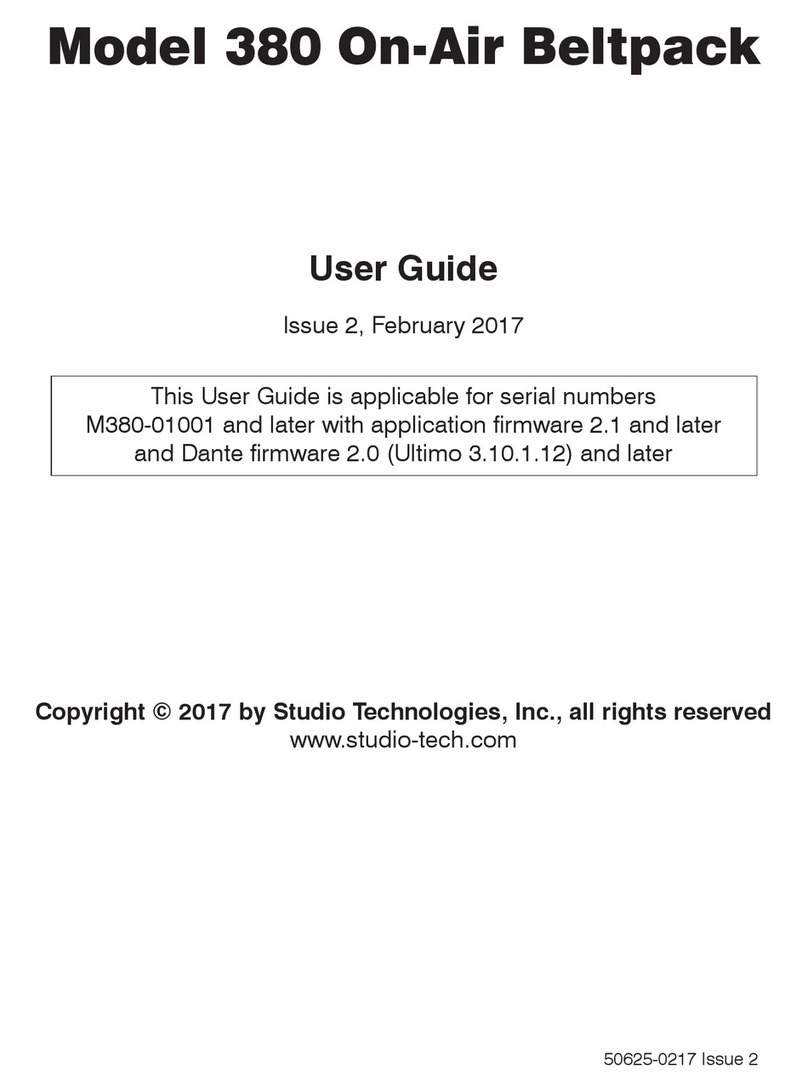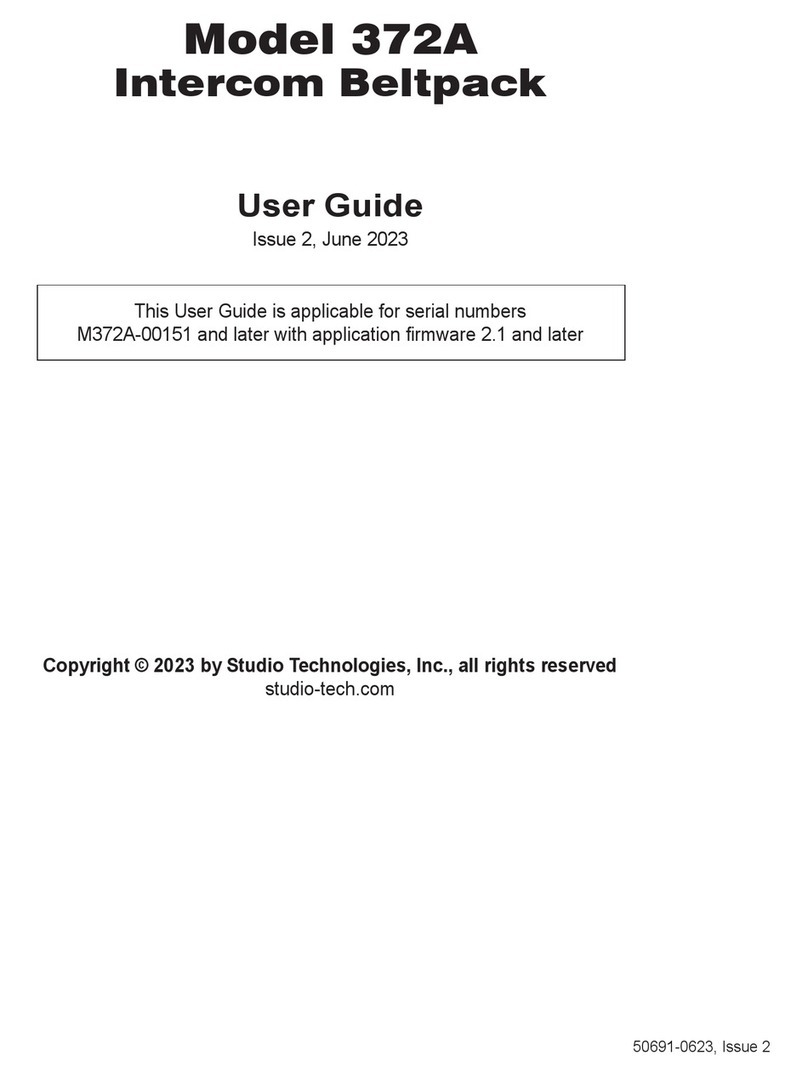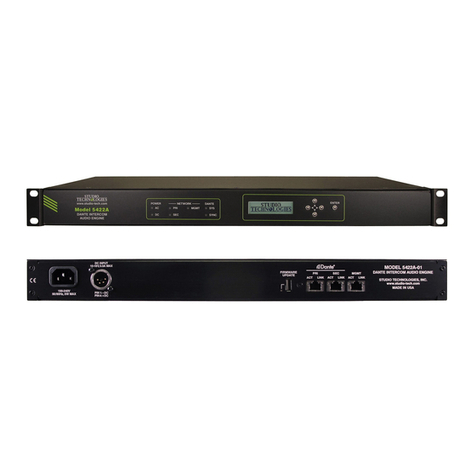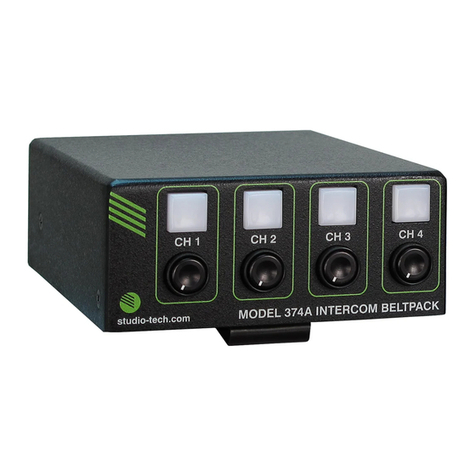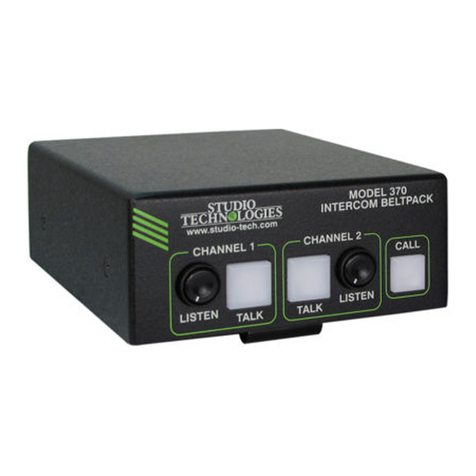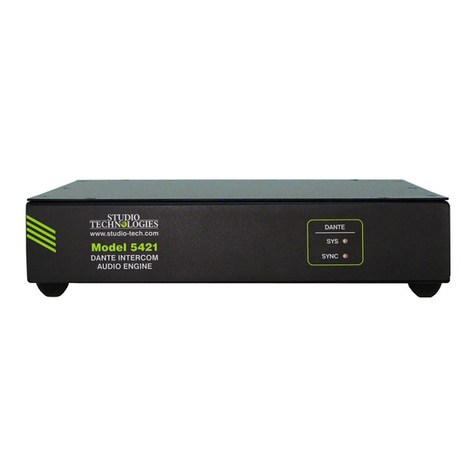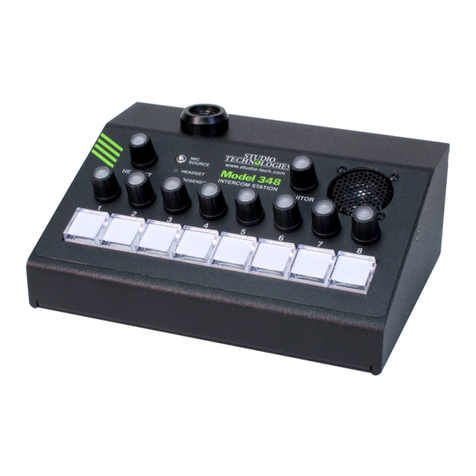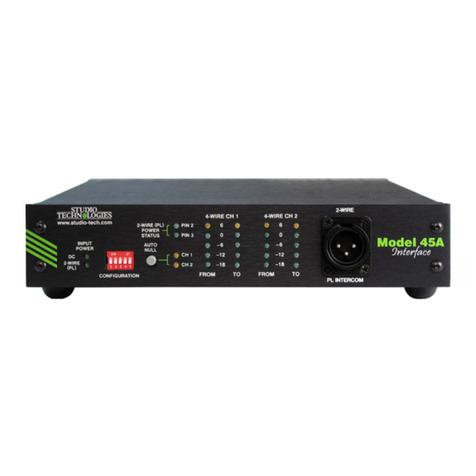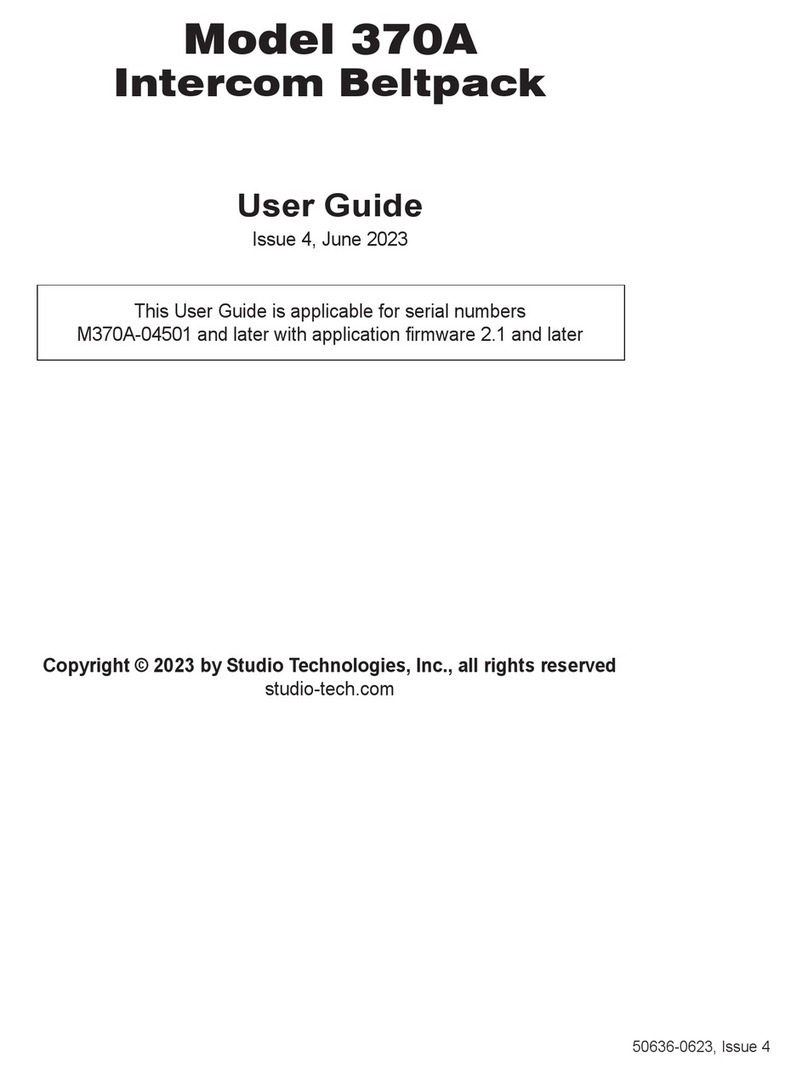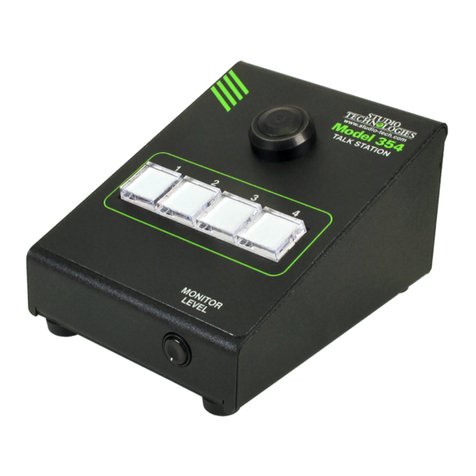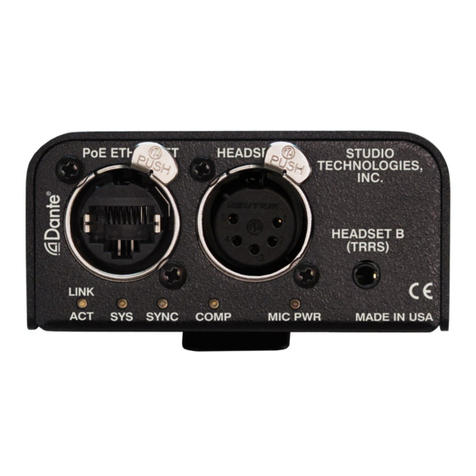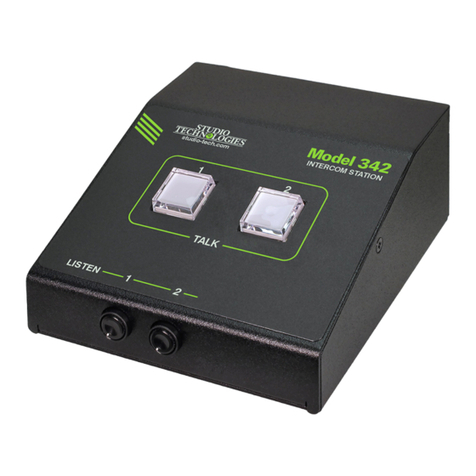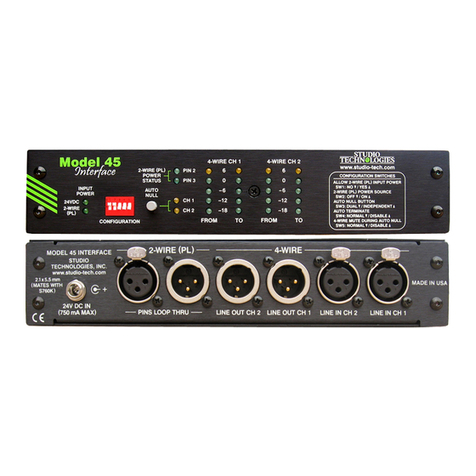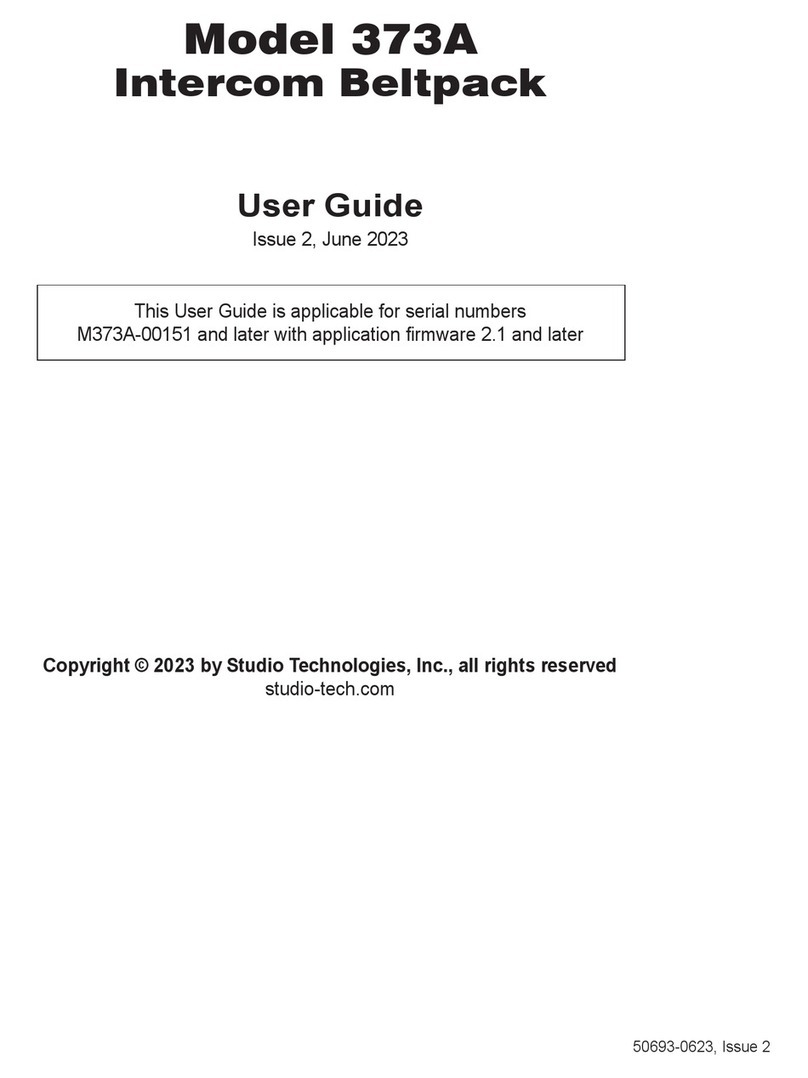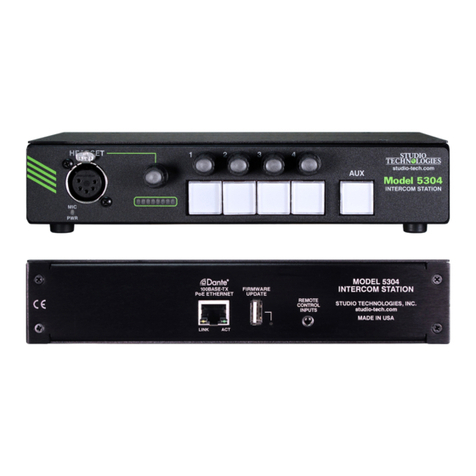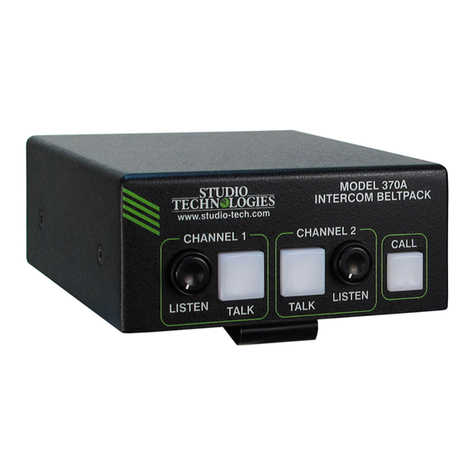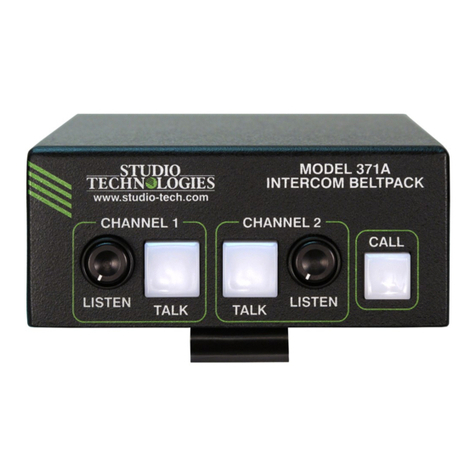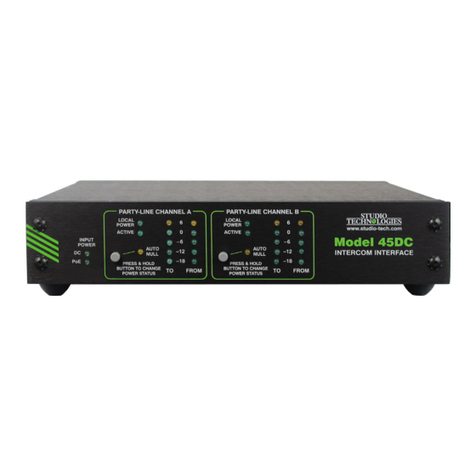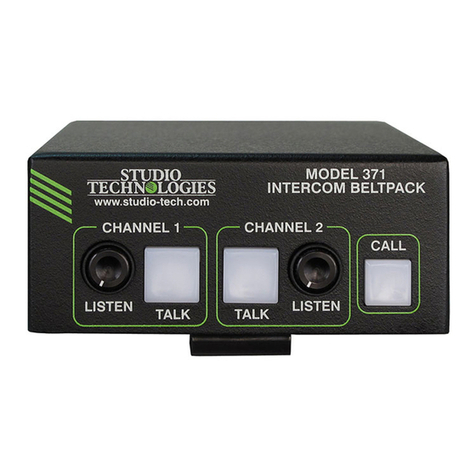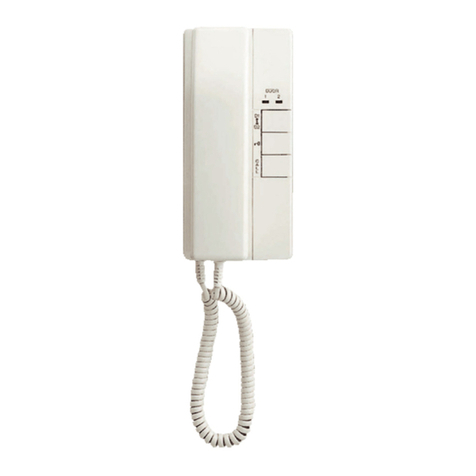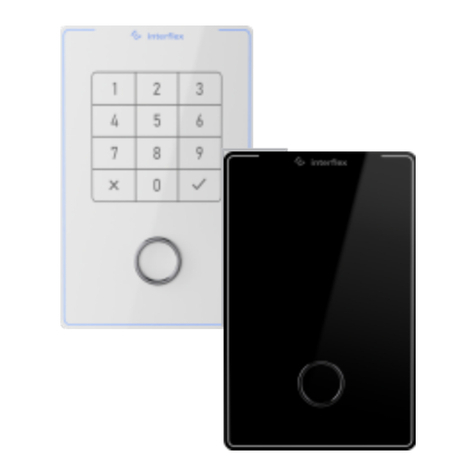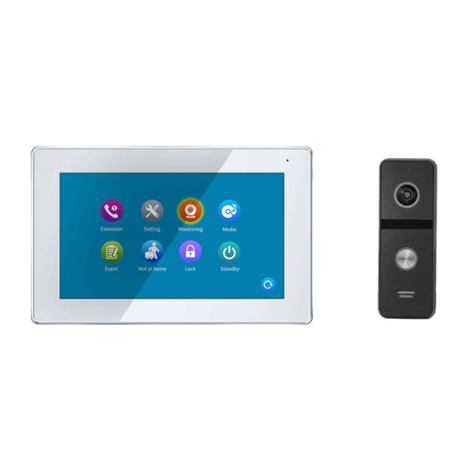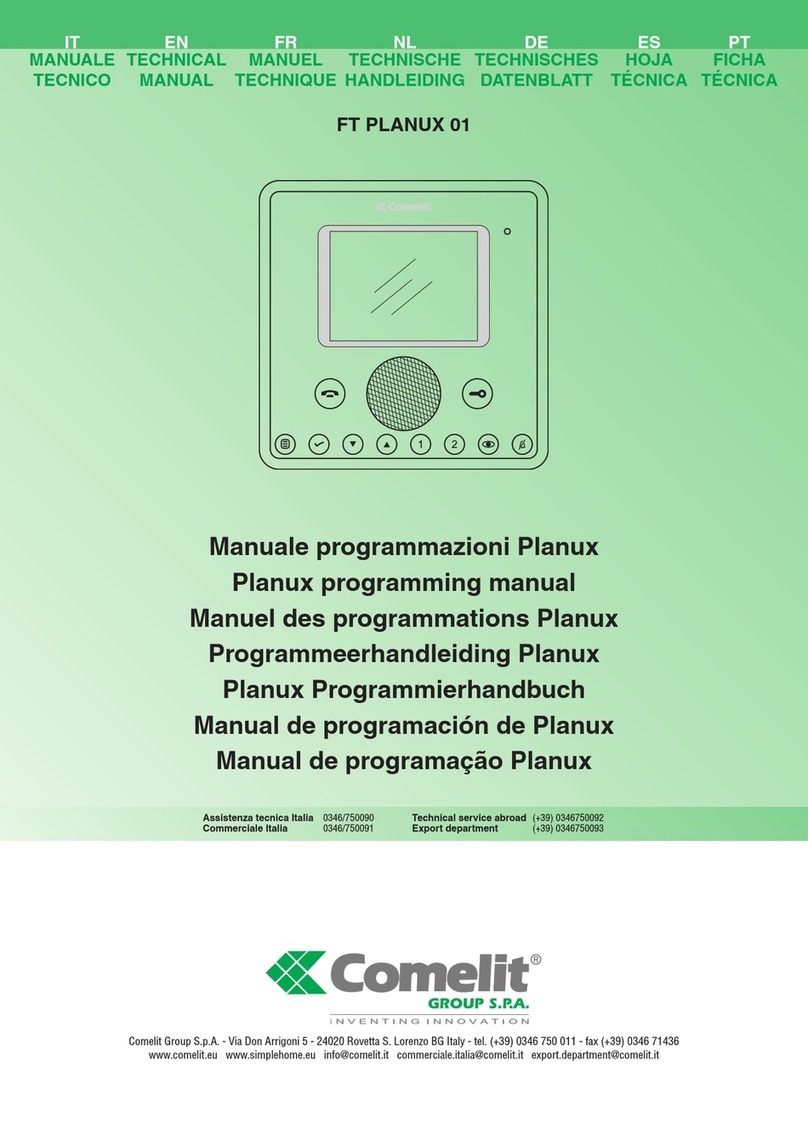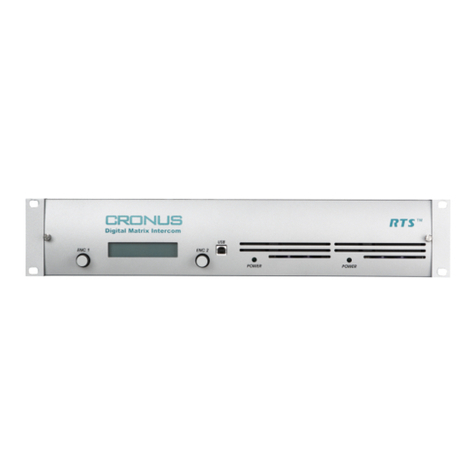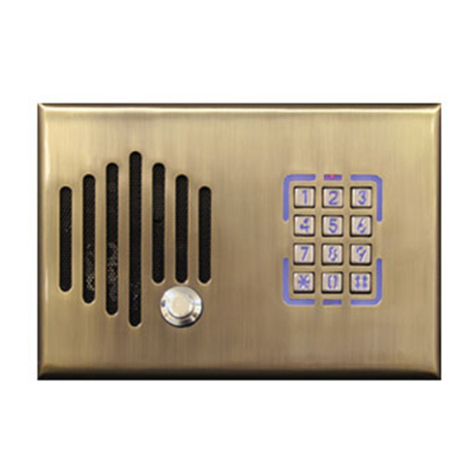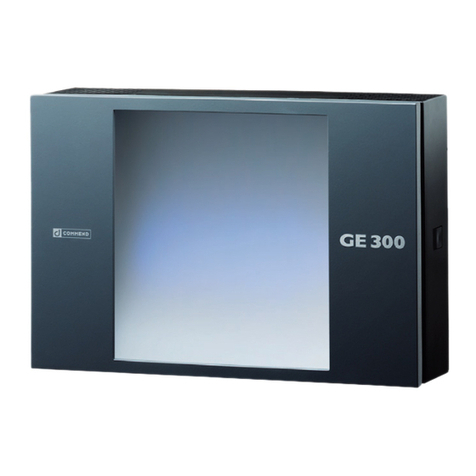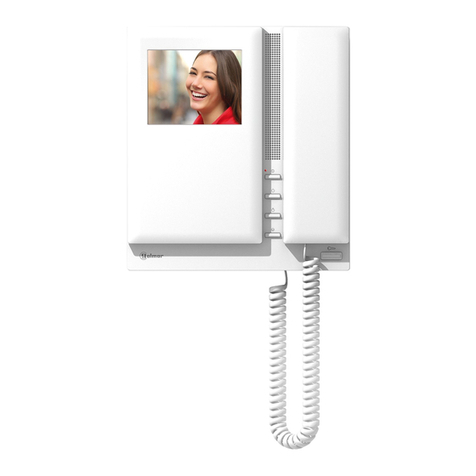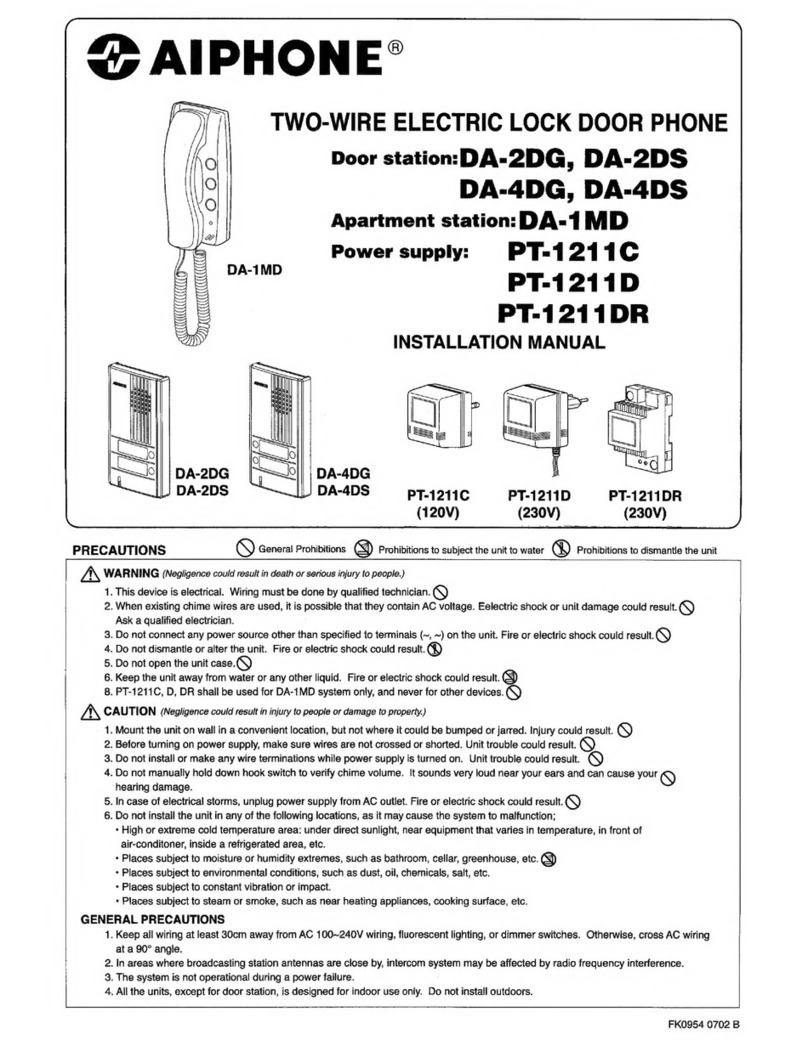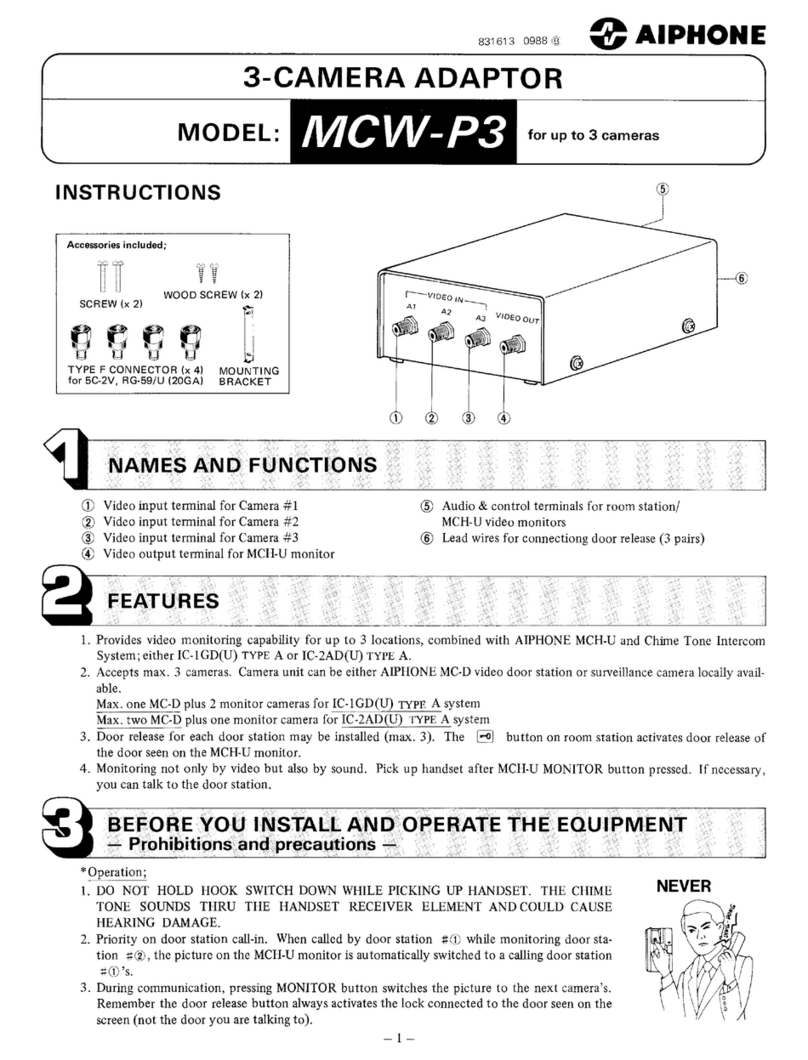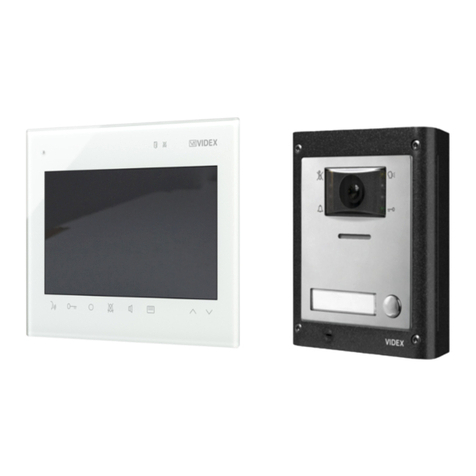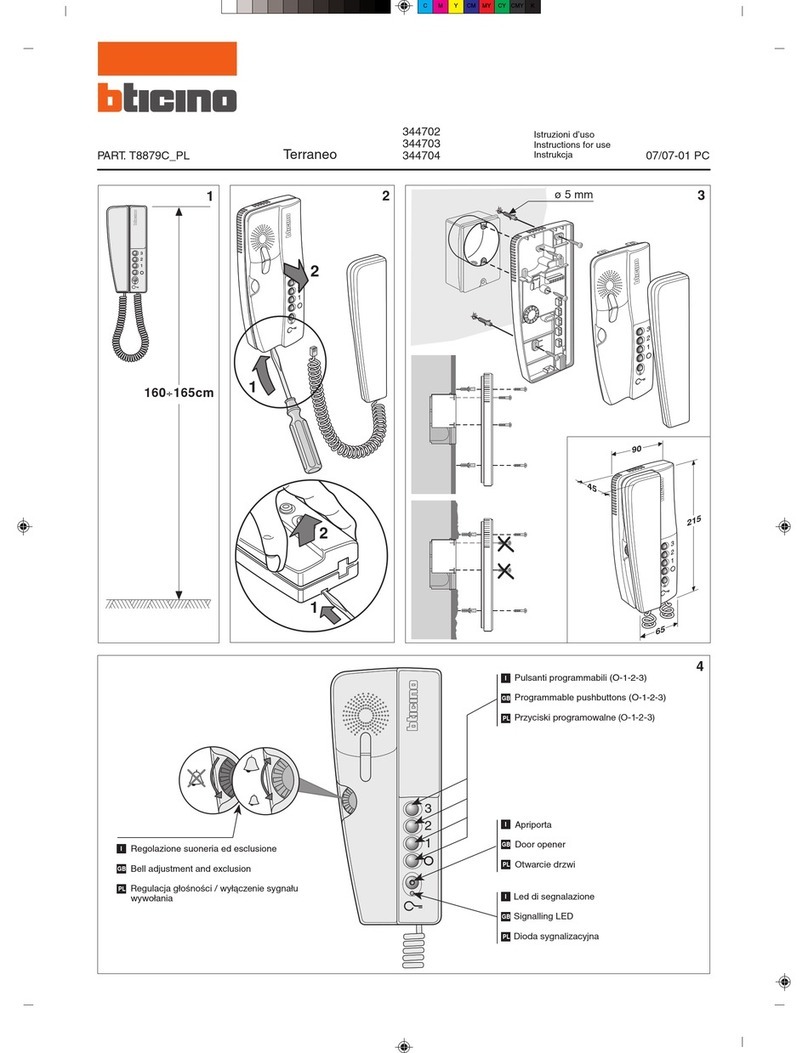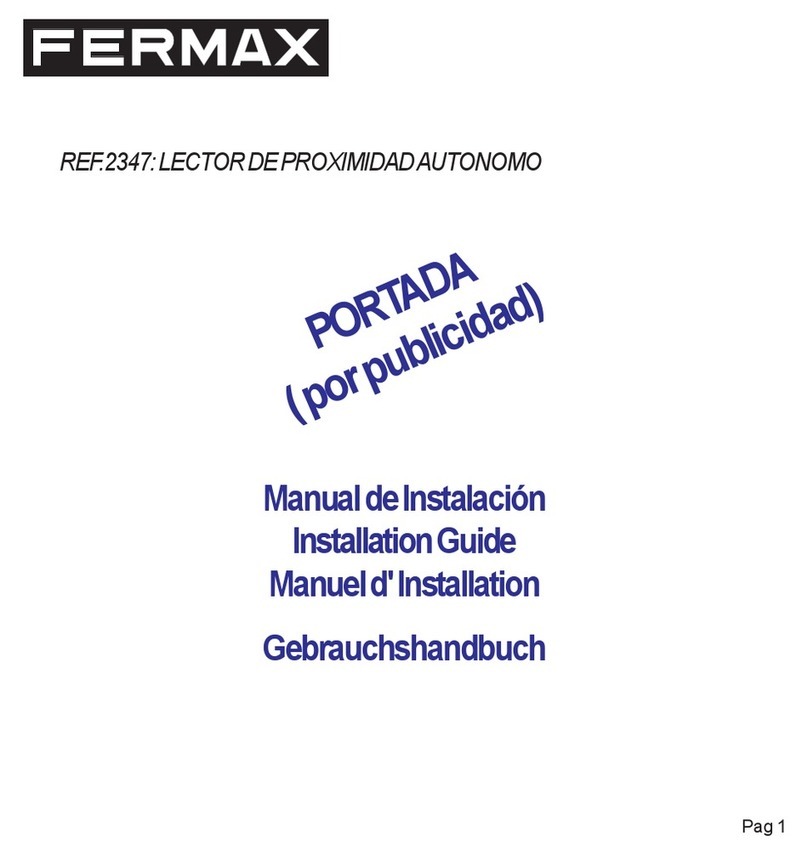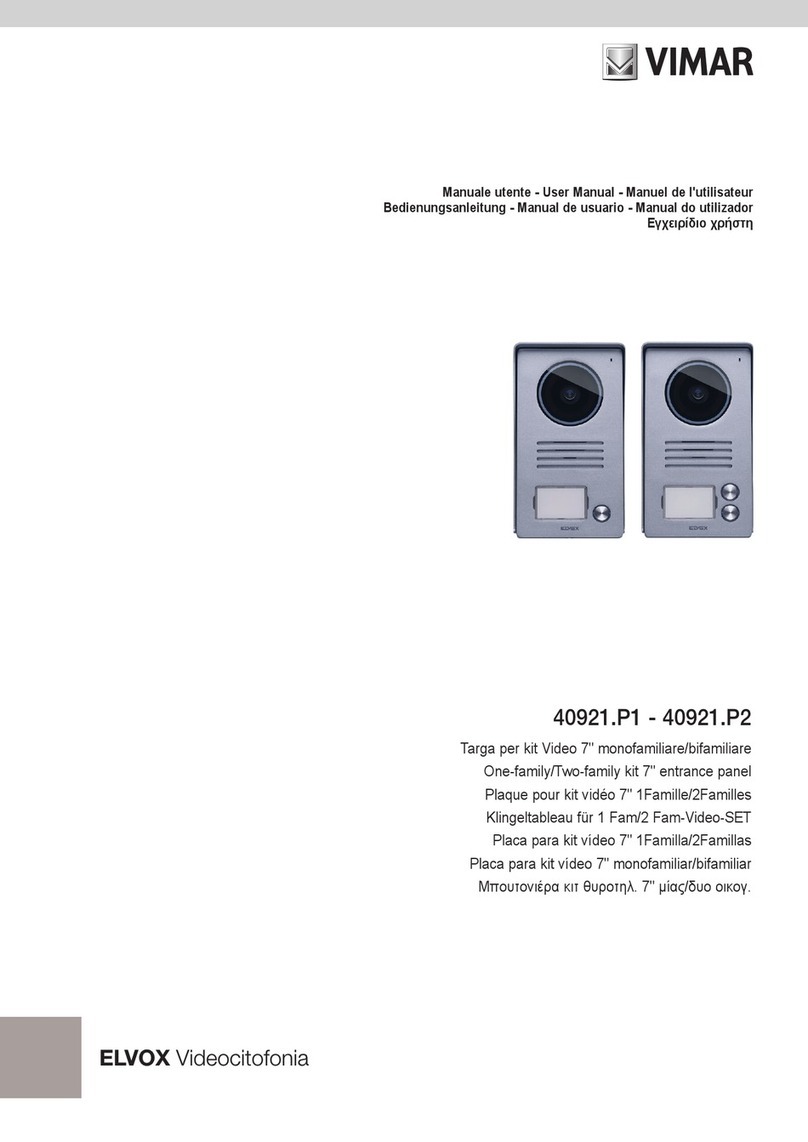
Issue 1, June 2018 Model 374A User Guide
Page 6 Studio Technologies, Inc.
MODEL 374A
INTERCOM BELTPACK
The audio quality of the Model 374A’s four
audio channels is excellent, with low distor-
tion, low noise, and high headroom. Care-
ful circuit design and rugged components
ensure long, reliable operation. A wide
range of applications can be supported,
including sports and entertainment TV and
radio events, streaming broadcasts, corpo-
rate and government AV installations, and
post-production facilities.
Dante Audio-over-Ethernet
Audio data is sent to and received from the
Model 374A using the Dante audio-over-
Ethernet media networking technology.
As a Dante-compliant device, the Model
374A’s four audio output (Dante transmit-
ter) and four audio input (Dante receiver)
channels can be interconnected (routed)
with other devices using the Dante Control-
ler software application. The Dante trans-
mitter and receiver channels are limited to
supporting four Dante flows, two in each
direction. The digital audio’s bit depth is up
to 24 with a sampling rate of 48 kHz. The
Model 374A is AES67 compatible and com-
pliant with the Dante Domain Manager™
software application.
Two bi-color LEDs provide an indication
of the Dante connection status. The Dante
Controller’s Identify command takes on a
unique role with the Model 374A. Not only
will it cause the talk button LEDs to light
in a unique highly visible sequence, it can
also be configured to turn off any active
talk channels.
Audio Quality
The Model 374A’s completely “pro”
performance is counter to the less-than-
stellar reputation of typical party-line
(PL) intercom audio. A low-noise, wide
dynamic-range microphone preamplifier
and associated voltage-controlled-amplifier
(VCA) dynamics controller (compressor)
ensures that microphone audio quality is
preserved while minimizing the chance of
signal overload. DC power to support elec-
tret microphones can be enabled if neces-
sary. The output of the microphone preamp
and compressor is routed to an analog-to-
digital converter (ADC) section that sup-
ports a sampling rate of 48 kHz with a bit
depth of up to 24. The audio signal, now
in the digital domain, travels through the
processor and on to the Dante interface
section where it is packetized and prepared
for transport over Ethernet.
Audio input signals arrive via four Dante
receiver channels. The supported sam-
pling rate is 48 kHz with a bit depth of up to
24. The audio signals pass into the Model
374A’s processor where channel routing,
headphone level control, and sidetone
creation are performed within the digital
domain. This provides flexibility, allowing
for precise control of the audio signals and
eliminates the need for the four rotary level
controls from having to directly handle
analog audio signals. The audio signals
destined for the 2-channel headphone out-
put are sent to a high-performance digital-
to-analog converter and then on to robust
driver circuitry. High signal levels can be
provided to a variety of headsets, head-
phones, and earpieces.
Configuration Flexibility
A highlight of the Model 374A is its ability to
be easily configured to meet the needs of
specific users and applications. All
configuration choices are made using
the STcontroller software application that
communicates with the Model 374A by way
of an Ethernet network connection. Con-
figurable parameters include microphone




















